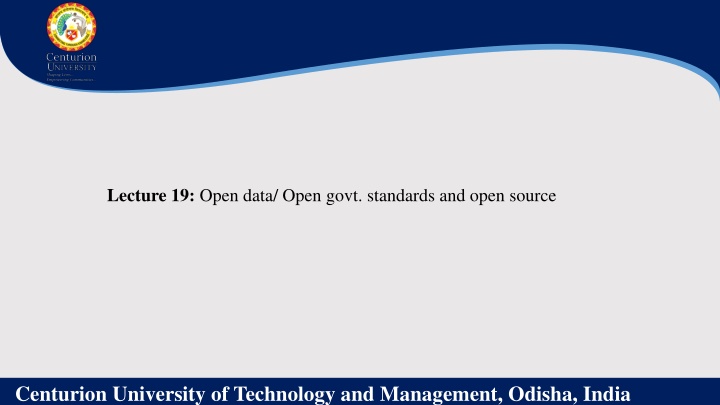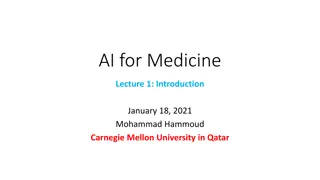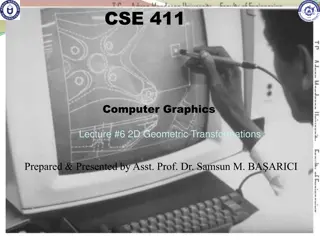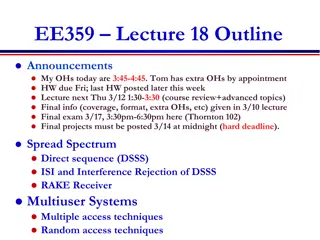
Leveraging Open Data and Standards in Agricultural ICT
Explore the benefits of open data in agriculture, including how it improves decision-making, increases productivity, and promotes sustainability. Learn about examples of open data such as weather, soil, market, and research data. Discover key open government standards in agricultural ICT set by organizations like the Open Geospatial Consortium (OGC), Global Forum on Agricultural Research (GFAR), and Food and Agriculture Organization of the United Nations (FAO).
Download Presentation

Please find below an Image/Link to download the presentation.
The content on the website is provided AS IS for your information and personal use only. It may not be sold, licensed, or shared on other websites without obtaining consent from the author. If you encounter any issues during the download, it is possible that the publisher has removed the file from their server.
You are allowed to download the files provided on this website for personal or commercial use, subject to the condition that they are used lawfully. All files are the property of their respective owners.
The content on the website is provided AS IS for your information and personal use only. It may not be sold, licensed, or shared on other websites without obtaining consent from the author.
E N D
Presentation Transcript
Lecture 19: Open data/ Open govt. standards and open source Centurion University of Technology and Management, Odisha, India
Open data in ICT in agriculture refers to data that is freely available to anyone to use and reuse. This data can be used to improve agricultural productivity, sustainability, and resilience. Improved decision-making: Open data can be used to improve decision-making by farmers, agricultural professionals, and other stakeholders. This data can help them to make better decisions about crop management, livestock production, and other agricultural activities. Increased productivity: Open data can help to increase productivity by providing farmers with information on the best practices for crop management, pest control, and marketing. Improved efficiency: Open data can help to improve efficiency by providing farmers with information on the movement of agricultural products through the supply chain. Sustainability: Open data can help to promote sustainability by providing farmers with information on how to reduce their environmental impact. Centurion University of Technology and Management, Odisha, India
Examples of open data in agriculture: Weather data: Weather data can be used to help farmers make decisions about crop planting, irrigation, and harvesting. Soil data: Soil data can be used to help farmers assess the quality of their soil and to determine the best crops to plant. Market data: Market data can be used to help farmers track the prices of agricultural products and to make decisions about when to sell their products. Research data: Research data can be used to help farmers learn about new agricultural practices and technologies. Centurion University of Technology and Management, Odisha, India
There are a number of open government standards in ICT in agriculture. These standards help to ensure that data is shared and used in a consistent and sustainable way. The Open Geospatial Consortium (OGC) standards: The OGC is an international organization that develops open standards for geospatial information. The OGC has developed a number of standards that are used in agriculture, including the Web Feature Service (WFS) and the Web Map Service (WMS). The Global Forum on Agricultural Research (GFAR) e-Agriculture Standards: The GFAR is a global forum that brings together stakeholders from the agricultural research community. The GFAR has developed a set of e- Agriculture standards that are used to facilitate the sharing and use of agricultural data. The Food and Agriculture Organization of the United Nations (FAO) e-Agriculture Standards: The FAO is a United Nations agency that is working to promote the use of ICTs in agriculture. The FAO has developed a set of e-Agriculture standards that are used to facilitate the sharing and use of agricultural data. These are just some of the key open government standards in ICT in agriculture. These standards help to ensure that data is shared and used in a consistent and sustainable way. Centurion University of Technology and Management, Odisha, India











